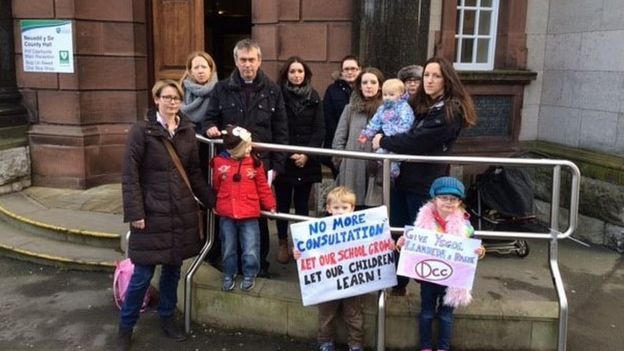Schools in rural areas are set to get more protection from closure under new rules published by the education secretary.
They will be officially designated and listed to give them added protection with closure being a last resort.
Kirsty Williams said it should only be considered once alternatives and impact on communities have been explored.
Ms Williams said rural schools were “at the heart of community life” and should get “a fair hearing”.
Anglesey, Gwynedd, Conwy, Denbighshire, Powys, Ceredigion, Pembrokeshire, Carmarthenshire and Monmouthshire are classed as the more rural of the 22 local authority areas, according to statisticians.
Hard-pressed councils have prompted anger in recent years by closing smaller schools in less heavily-populated areas to tackle surplus places.
But the minister, inviting consultation on changes to the School Organisation Code, said alternatives to closure should be considered, such as federation with other schools.
Authorities will have to assess the likely impact of a school’s closure on children’s education, the wider community, and travel arrangements, and explain why closure is the “most appropriate” course of action.

To increase community involvement in decisions, consultations should be published on a school day while any new alternatives to closure arising during the process should be given consideration.
Ms Williams pointed to “unique issues” facing rural schools and she wants to ensure children that attend them have the same opportunities as those in other areas.
“These proposals strengthen the School Organisation Code to make sure that councils and other proposers do everything they can to keep a rural school open before deciding to consult on closure.,” she added.
She believes “talking and engaging with the local community is vital”.
“If there is a consultation to close a school, all options and suggestions that emerge form this must be considered before a decision is made. This might include federation with other schools or increasing the community use of school buildings to make the school more viable,” Ms Williams added.
“Rural schools are at the heart of community life. I therefore want to make sure these schools get a fair hearing when their future is being considered.
“These plans will play a key part in our national mission to raise standards and offer opportunities to all our young people.”
The policy was part of the agreement which saw Ms Williams, the only Liberal Democrat AM, join the Welsh Government as education secretary after the 2016 assembly elections.
‘Unclear’
Buddug Ellis, head teacher of Ysgol Bro Elwern in Denbighshire, welcomed the new rules but questioned the wording.
Her school was under threat of closure in the past and it is now a federated school.
She said: “Unfortunately, it doesn’t really say what the assembly means by a small school.
“One with 30, 40, 50 pupils or possibly a school of 100 to 150 pupils?
“That’s unclear. But obviously it gives schools some sort of security for the future.”
Council applications for cash under a new £2.5m small and rural schools grant scheme are currently being assessed.
Plaid Cymru education spokesman Llyr Gruffydd welcomed the offer to give communities a “stronger voice” in the process.
But he added: “If the government wants to keep smaller schools open, they must also recognise the additional cost to councils at a time of austerity and cuts.”
Welsh Conservative spokesman Darren Millar added that the measures would “do little to undo the harm already caused and do nothing to address the perennial issue of underfunding which is biggest obstacle to keeping rural schools open”.
Prof David Reynolds, head of education at Swansea University and a former Welsh Government advisor, welcomed the new guidance saying schools “don’t have to be huge to be good”.
“We’ve closed hundreds of schools in Wales,” he said.
“Sometimes they’ve been the very, very small ones – five, 10, 20 pupils, that’s more defensible.
“But there are lots of very good schools out there of 30 to 35 pupils that we should support.
[Source”timesofindia”]
